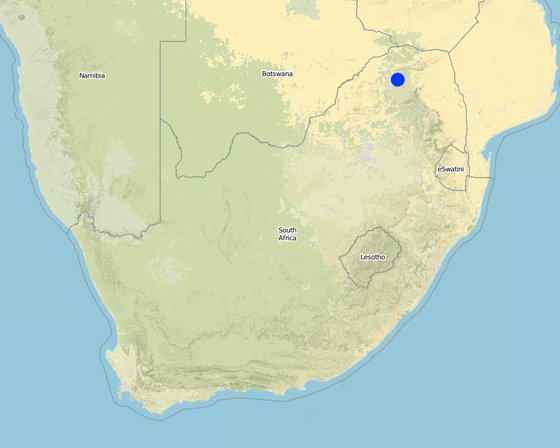

Grass strips are left uncultivated to demarcate field boundaries. The width of the grass strips varies widely depending on the availability of land (distance from the village). No establishment is required. The group of fields is fenced off with wire fences (in close vicinity to town) or natural fencing using aloes and dead branches from thorn trees (for gap filling). The fence protects the crops and grass strip during summer. In winter the fields and grass strips are grazed.

Location: Nebo and Central district, Limpopo Province, South Africa
No. of Technology sites analysed:
Spread of the Technology: evenly spread over an area (0.3 km²)
In a permanently protected area?:
Date of implementation: more than 50 years ago (traditional)
Type of introduction







| Specify input | Unit | Quantity | Costs per Unit (USD) | Total costs per input (USD) | % of costs borne by land users |
| Labour | |||||
| Fencing | persons/day/ha | 8.33333 | 6.0 | 50.0 | 100.0 |
| Equipment | |||||
| Tools | ha | 1.0 | 10.0 | 10.0 | 100.0 |
| Construction material | |||||
| Wire | ha | 1.0 | 200.0 | 200.0 | 100.0 |
| Total costs for establishment of the Technology | 260.0 | ||||
| Total costs for establishment of the Technology in USD | 260.0 | ||||
| Specify input | Unit | Quantity | Costs per Unit (USD) | Total costs per input (USD) | % of costs borne by land users |
| Labour | |||||
| Cultivation and weeding | persons/day/ha | 1.666666 | 6.0 | 10.0 | 100.0 |
| Construction material | |||||
| Wire | ha | 1.0 | 10.0 | 10.0 | 100.0 |
| Total costs for maintenance of the Technology | 20.0 | ||||
| Total costs for maintenance of the Technology in USD | 20.0 | ||||
Reduce erosion, manner for grazing
Winter grazing with maize staple supplement
Winter grazing with maize staple supplement
Loss of arable land in fenced–off-area
More labour for fencing
Higher fencing costs
Relationships between neighbours in the fenced off area